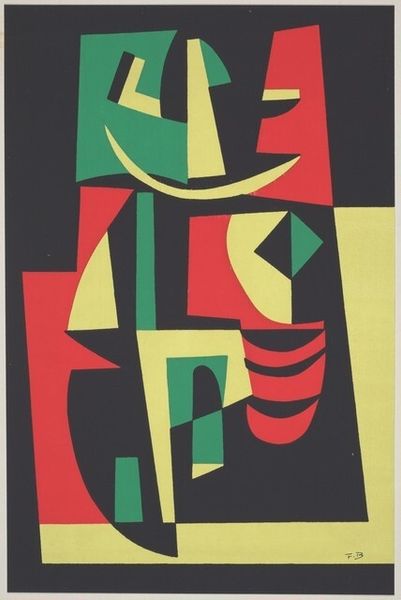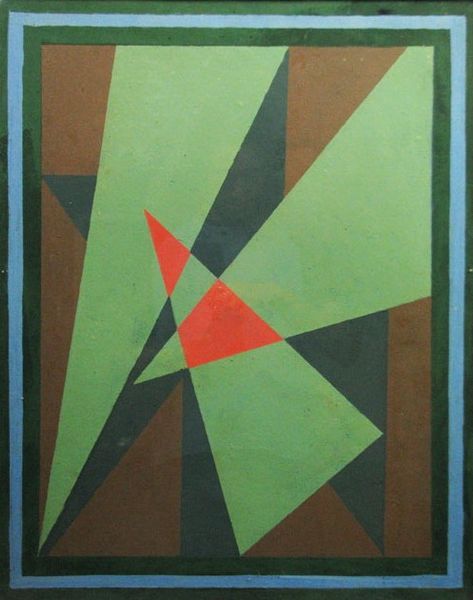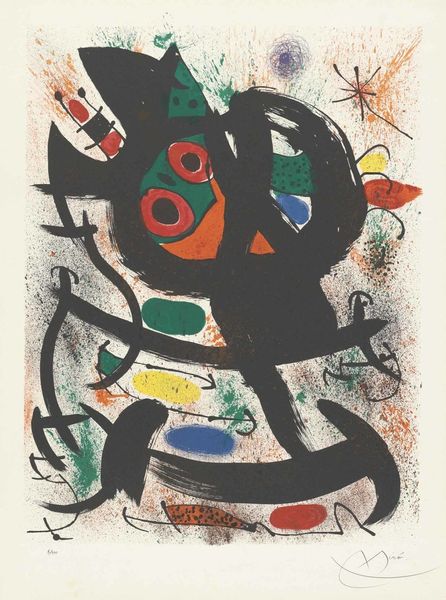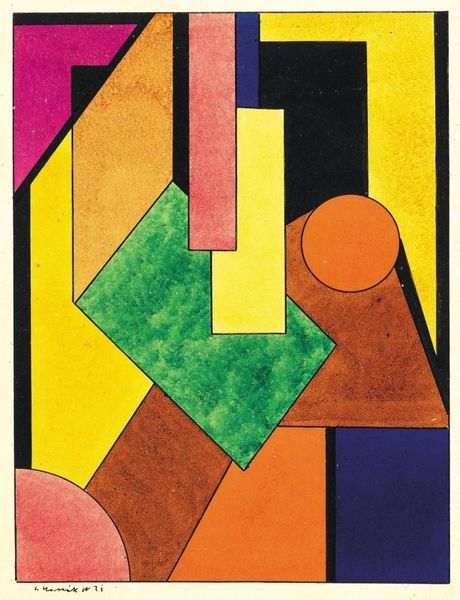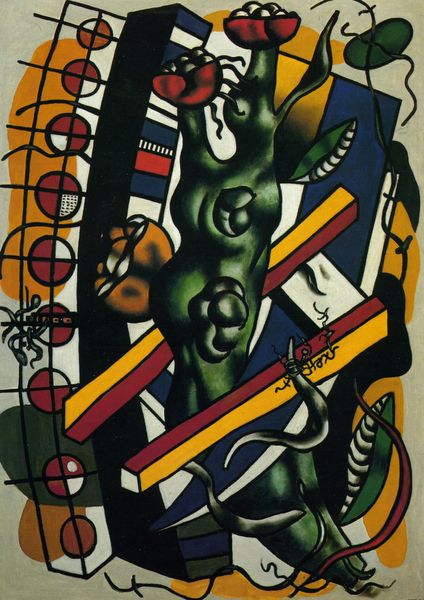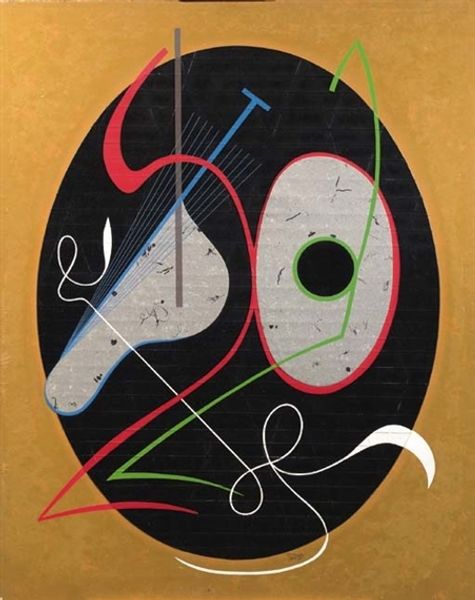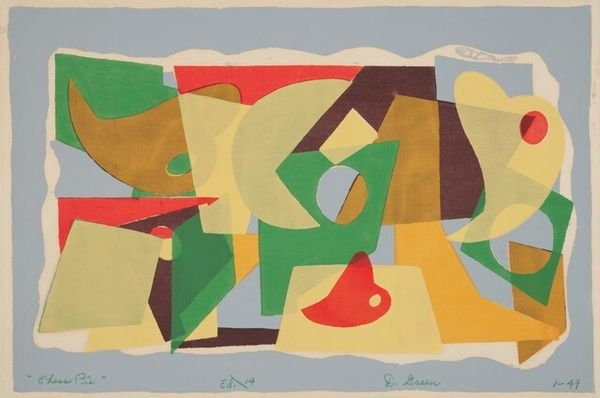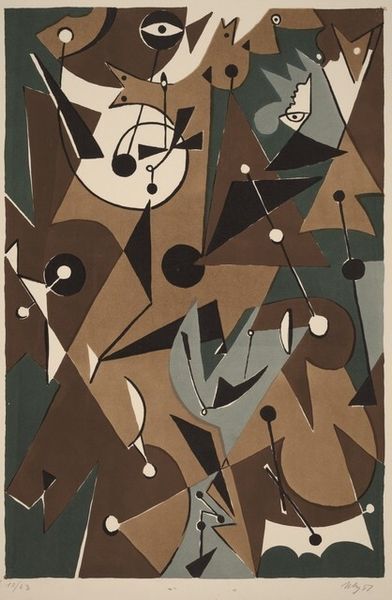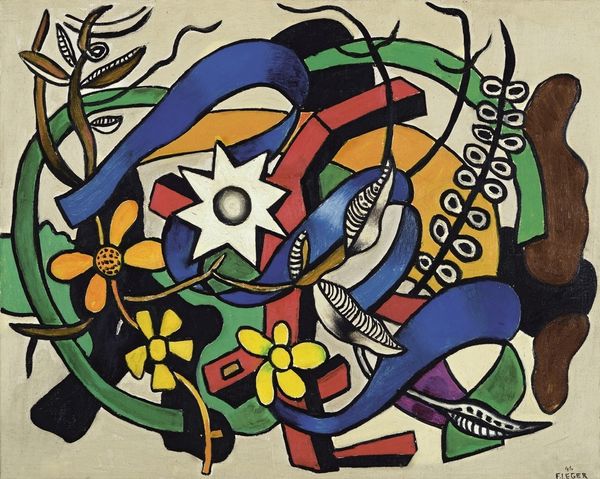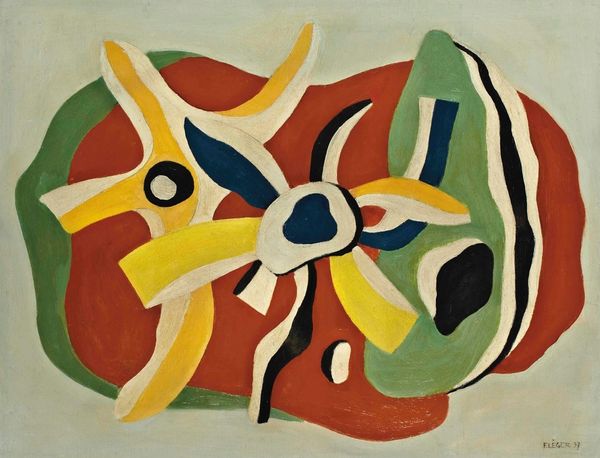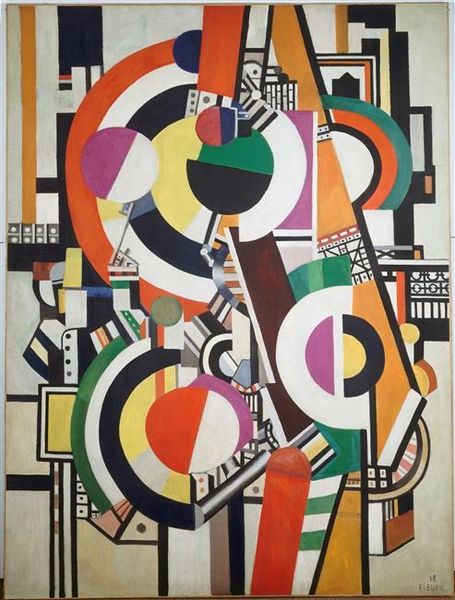
Copyright: Ernst Wilhelm Nay,Fair Use
Editor: So this is "Oberon," a print by Ernst Wilhelm Nay from 1949. The composition really strikes me; it’s so vibrant with geometric forms and a real playful energy, considering it's made up of very simple materials. What do you see in this piece, considering its materials and the time it was made? Curator: Well, I’m drawn to how Nay engages with the very act of printmaking here. Think about the limitations he embraced: the flatness inherent to the medium, the reliance on bold color separations. The production of a print involves repetitive motions, careful registration, and an inherent sense of multiplication – all vital when viewed from a materialist viewpoint. How does the process itself shape our understanding of the final image? Editor: That's interesting! So, you're focusing on how the limitations of the printmaking process informed Nay’s artistic choices, and by extension the social elements of artistic production? Curator: Exactly! And consider the postwar context: Abstract Expressionism was gaining momentum. Nay's work, with its emphasis on colour and form, participates in that conversation, but also poses challenges. It refuses the notion of 'unique' artwork by engaging the artistic movement through more industrial forms. Where does "Oberon" stand in the spectrum of postwar art production and artistic commodification? Editor: That gives me a whole new perspective. It's not just about the visual impact, but about Nay’s active participation in the democratization of art that is born from industrial manufacturing. Thanks for illuminating how the choice of materials influences meaning. Curator: And thanks to you for prompting this analysis! Thinking about artistic creation as a means of production gives rise to really unique and fresh perspectives!
Comments
No comments
Be the first to comment and join the conversation on the ultimate creative platform.
